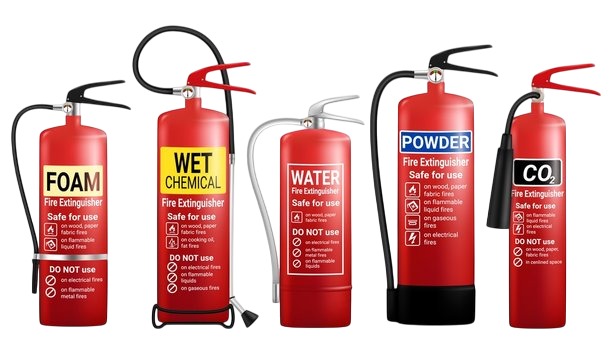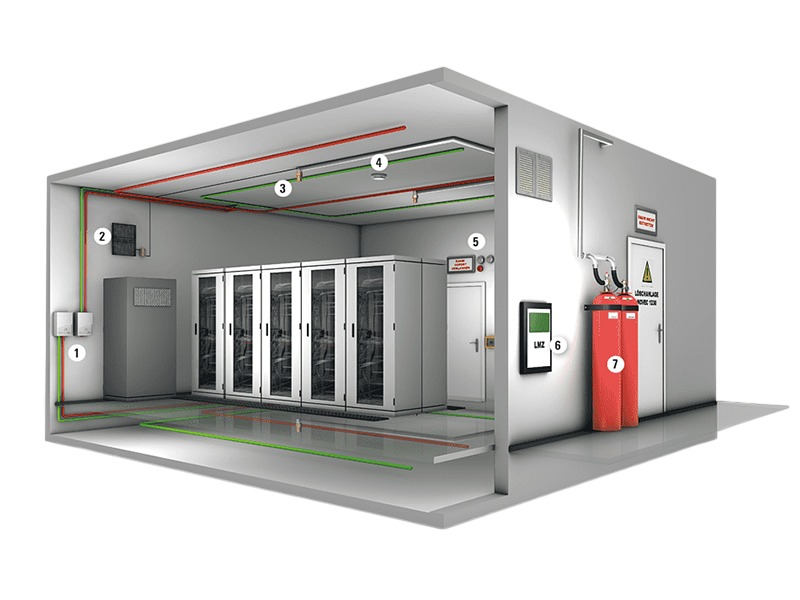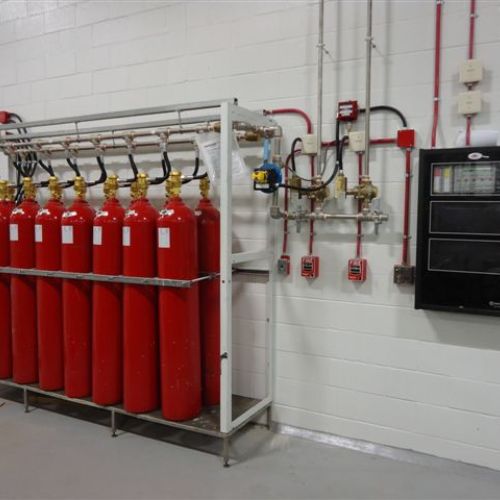Special Hazard
Carbon Dioxide Fire Suppression System
Fire suppression systems are designed to suppress or extinguish a fire in sensitive environments where water from a is not a desired extinguishing agent. Common areas where you will find fire suppression systems include server rooms, engine rooms, flammable storage areas, museums, and data centers.
- Displacing Oxygen
- Cooling the Fire
- Suppressing Re-Ignition


There are a few different types of agents that are used in a suppression system to suppress the fire. In server rooms and environments where you have personnel working in the area, you will usually find clean agent or inert gas suppression systems. In environments where there are few personnel or none at all, you will typically find CO2 fire suppression systems. The areas that you’ll find CO2 fire suppression systems include engine rooms, generator rooms, power stations, flammable liquid storage rooms, and around large industrial machines.
Professional CO₂ Fire Suppression Services
Our team of certified fire protection experts provides complete CO₂ fire suppression system installation, inspection, and maintenance services to ensure compliance with NFPA, OSHA, and local fire regulations.
Where CO₂ Fire Suppression Systems Are Used?
CO₂ systems are commonly used in industries where traditional water-based fire suppression is not ideal, such as data centers, electrical rooms, engine compartments, and industrial facilities.

Paging/Loudspeaker System/Emergency Telephone - Annual Inspection
Testing and Inspection will be performed in accordance with CAN/ ULC S525-07,CAN/ ULC S536-04 and CAN/ ULC S541. The Ontario Fire Code and Local Fire Department standards as follows, where applicable
- Test all loudspeakers
- List locations of all loudspeakers
- Verify that all loudspeakers are operational and can be heard throughout the building.
- Loudspeakers are not concealed and are visible and accessible.
- Maximum audibility does not exceed 85% db
- Loudspeaker is provided with the means to disconnect the circuit automatically in the event of a short circuit and cause a signal at the central alarm.


